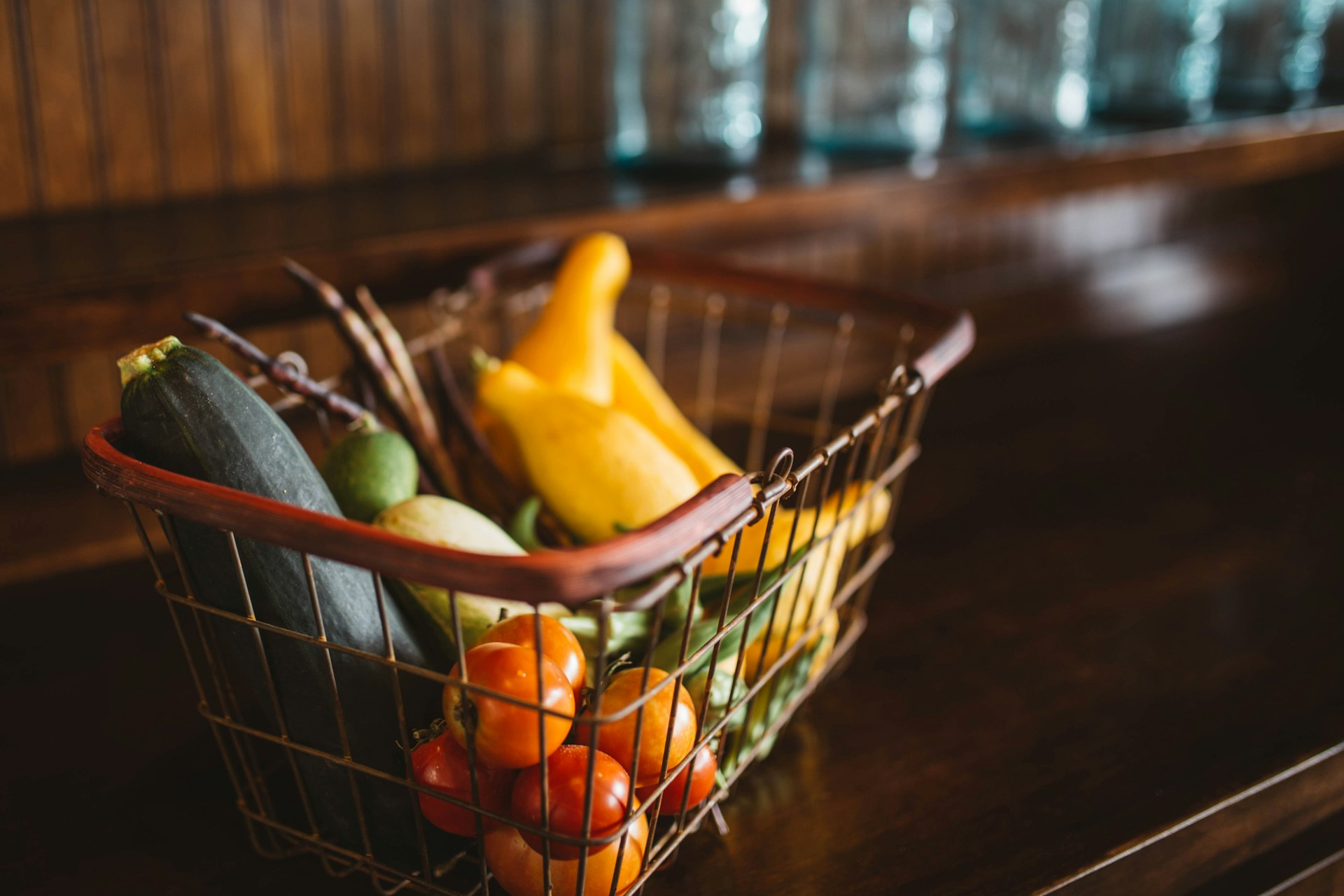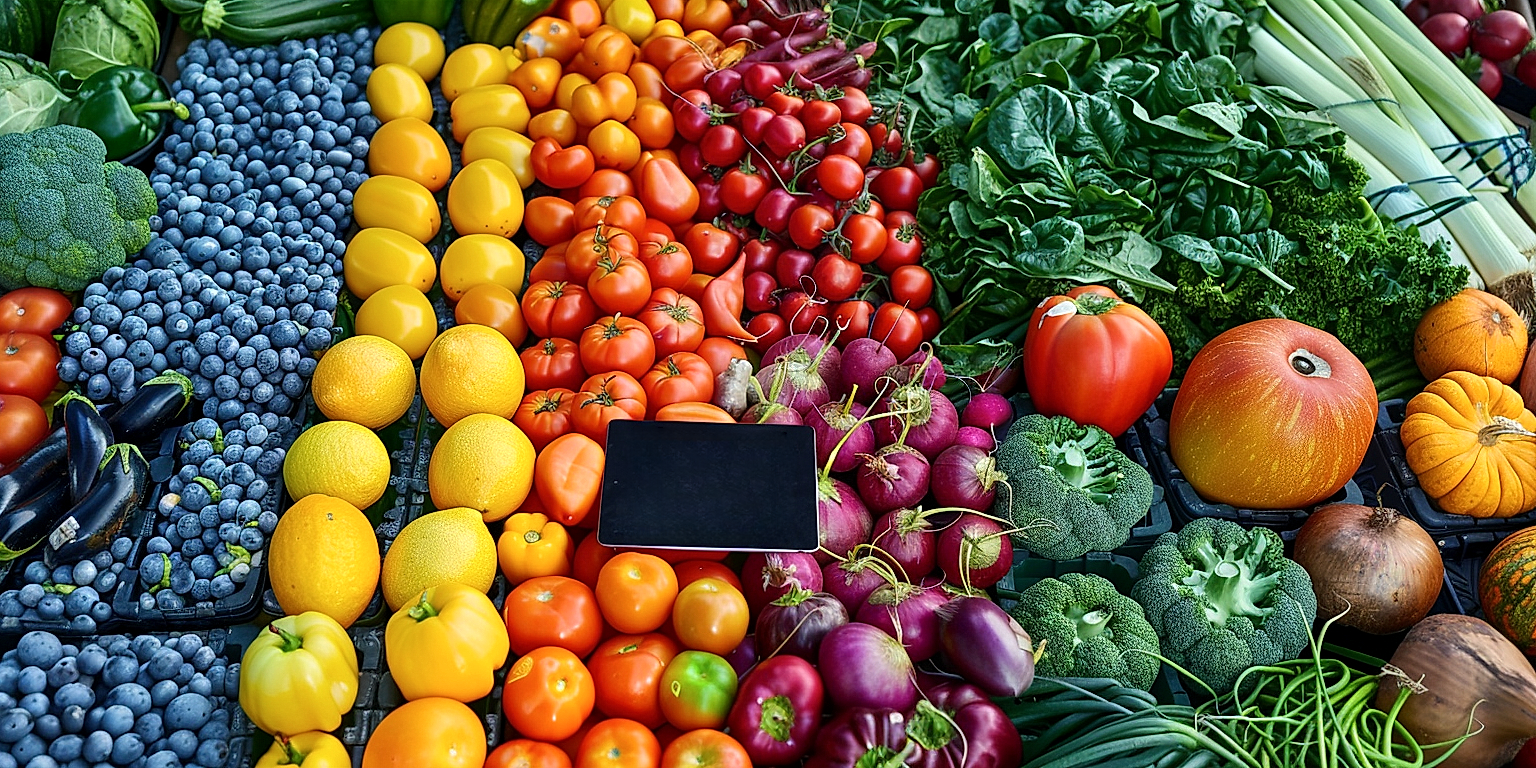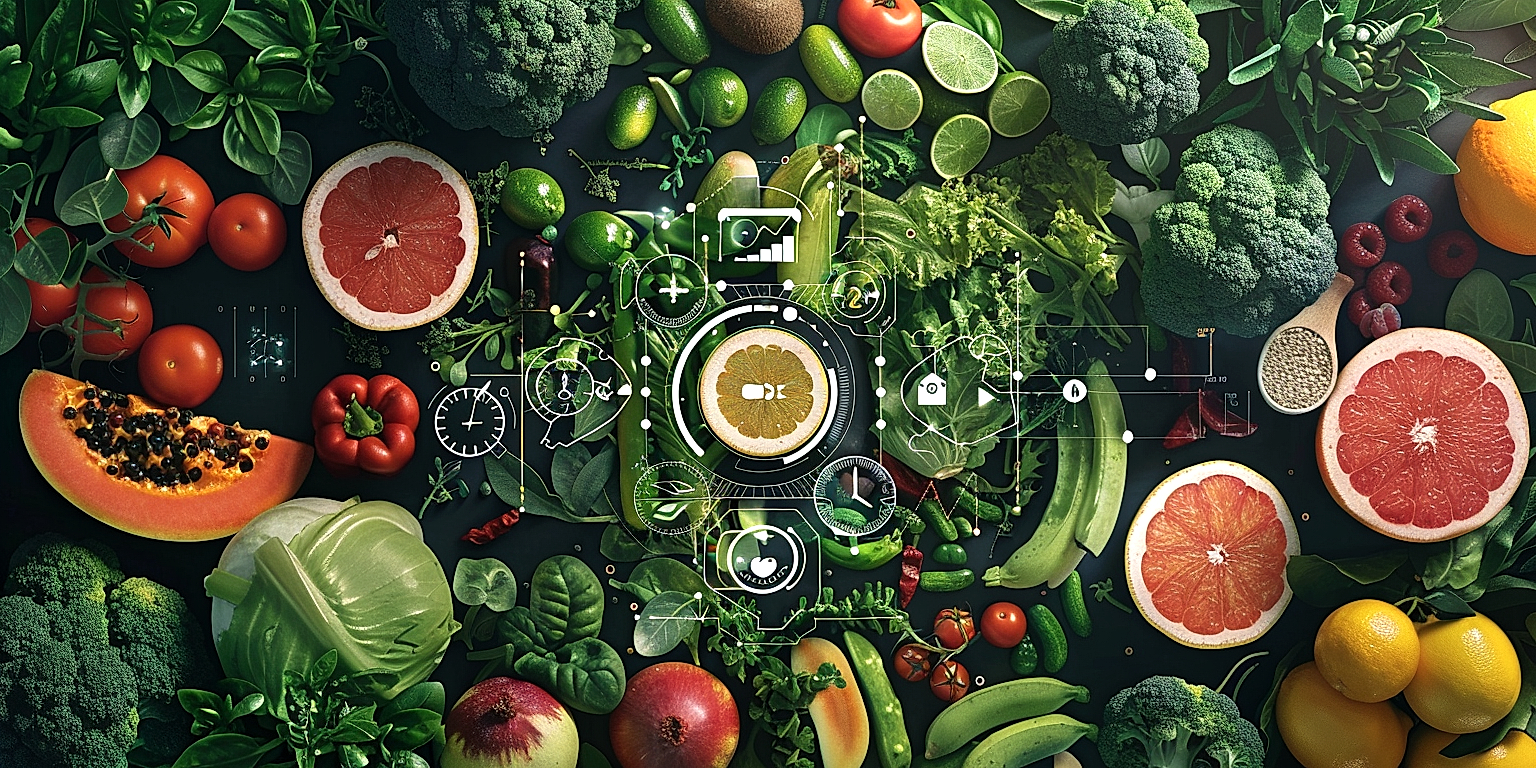The landscape of logistics and supply chain management appears to be undergoing a notable shift.
With the advent of technological advancements and increased customer demand, the produce shipping industry is evolving faster than ever.
This evolution is marked by distinct trends, redefining the way businesses operate.
Understanding these trends is essential for every stakeholder as they can significantly impact the industry’s long-term growth and profitability.
This article will delve into these emerging trends, providing valuable insights for those involved in the sector.
It’s an ever-changing climate, and staying ahead of these transformations will be vital to maintaining a competitive edge.
Contents
- Key Logistics Trends In The Produce Shipping Industry
- 1. Increasing Preference for Farm-to-Table Delivery Services
- 2. Expansion of Cold Chain Logistics for Freshness
- 3. Enhanced tracking for safety and quality control.
- 4. Adoption of Artificial Intelligence and Internet of Things in Supply Chain
- 5. Demand Surge for Eco-friendly Shipping Options
- 6. Rise of e-commerce in fresh produce market.
- 7. Enhanced automation in storage and transportation process
- The Bottom Line
Key Logistics Trends In The Produce Shipping Industry
1. Increasing Preference for Farm-to-Table Delivery Services
In recent times, there has been an evident shift in consumer preferences towards fresher produce directly from the farm, contributing significantly to the logistics trends in the produce shipping industry.
The rise in the popularity of farm-to-table delivery services can largely be attributed to the growing consciousness towards healthier food choices among consumers.
People are now more concerned about where their food comes from and how it’s grown and handled before it arrives at their table.
As a result, farms and businesses are leveraging this trend by providing delivery services that maintain the crisp freshness of the produce from the farm to the consumer’s table.
These farm-to-table services are transforming the landscape of the produce shipping industry, giving birth to unique logistics strategies.
It’s not just about delivery; farm-to-table services also emphasize on transparency. Detailed tracking information is now a significant part of the service, allowing customers to know exactly where their food comes from.
This manifests the pressure on logistics providers to display high-level performance in maintaining produce quality, punctual delivery timings, and flawless tracking.
Moreover, the logistics focus has shifted towards creating a seamless communication flow between farmers, delivery service, and consumers.
This strategic communication ensures everyone involved is informed of every movement and condition of the produce from the moment it’s harvested till it gets delivered.
Gone are the days when logistics were solely about transportation. Now, it’s also a question of careful handling, precise temperature control, and accommodation of specific produce requirements.
The farm-to-table movement is not just a trend; it has become a lifestyle choice for many, reshaping the operational intricacies of the produce shipping industry.
This lifestyle choice also has a significant bear on the sustainability quotient of logistics, pushing for greener transportation and storage methods.
With every fresh delivery made, it’s clear that farm-to-table services are far from a fleeting trend. Instead, they’re an integral growth driver of the modern produce shipping industry.
The farm-to-table surge has indeed set a new benchmark for quality standards and customer service in the logistics sector.
To stay relevant in the changing scenario, logistics providers are now redefining their strategies and technologies and adapting to more holistic approaches.
Undoubtedly, the increasing preference for farm-to-table delivery services has paved the roadmap for innovations and transformations in the produce shipping industry.
2. Expansion of Cold Chain Logistics for Freshness
There has been a significant upturn in the application of cold chain logistics for freshness in the produce shipping industry.
Cold-chain logistics is essentially a temperature-controlled supply chain system used for the preservation and to extend and ensure the shelf life of products, such as fresh agricultural produce, seafood, frozen food, photographic film, pharmaceuticals and chemicals.
It has proven to be a game-changer in maintaining the quality and freshness of produce from the farm to the table.
This is achieved by keeping the produce in a temperature-controlled environment during shipping, thereby minimizing spoilage.
By its nature, the cold chain logistics system includes an uninterrupted series of refrigerated production, storage and distribution activities, along with associated equipment and logistics, which maintain a desired low-temperature range.
Advanced technologies are helping drive this expansion, with the emergence of smart containers and IoT-enabled tracking devices.
These technological advancements allow for real-time monitoring and control of temperature conditions inside shipping containers.
Coupled with sensors and data analytics, these technologies provide critical insights into shipment conditions, enabling timely intervention to prevent produce damage.
Such tech-enabled cold-chain logistics is providing superior assurance to customers about the freshness and quality of their ordered produce.
The global demand for fresh produce, especially in urban and distant markets, is a significant driver for this expansion and sophistication of cold chain logistics.
International regulatory bodies and local food safety authorities are also playing a crucial role in shaping this trend, by enforcing strict quality control and safety standards in produce shipping.
These regulations often mandate the use of cold-chain strategies to ensure the safe and hygienic transportation of fresh produce.
Investments in cold chain logistics are, therefore, on an upswing, with startups and enterprise companies alike seeking to innovate and capitalize on this rising industry trend.
However, the expansion of cold-chain logistics is not without its challenges, as it necessitates significant power consumption and specialized infrastructure.
Nonetheless, the benefits offered by improved product integrity, loss prevention, and customer satisfaction make the cold-chain logistics an indispensable part of the future landscape of the produce shipping industry.
3. Enhanced tracking for safety and quality control.
One of the critical logistics trends in the produce shipping industry is enhanced tracking for safety and quality control.
The importance of tracking systems is increasingly being recognized due to the rising consumer awareness concerning the
safety and quality of food products.
A sophisticated tracking system ensures that the produce shipped is safe to consume and maintains its high quality.
With the integration of tracking systems, companies are able to prevent foodborne illnesses, improving consumer confidence and trust.
Moreover, tracking systems are beneficial in ensuring that the logistical process is running efficiently and effectively.
It provides real-time data and insights, helping businesses make informed decisions quickly.
This real-time data can help in promptly identifying and resolving any issues, thereby ensuring minimal disruption in operations.
Furthermore, tracking systems are evolving with technological advancements such as Artificial Intelligence (AI) and Machine Learning (ML).
These technologies offer predictive analysis, helping businesses anticipate any potential issues before they occur.
More than just monitoring, these advanced tracking systems offer predictive maintenance, the ability to anticipate and solve problems even before they happen.
Enhancing tracking can also be a cost-saving measure as it helps prevent wastage and returns due to poor quality products.
For example, using temperature tracking can help ensure that fresh produce is kept at optimal conditions, preventing spoilage and reducing waste.
In summary, enhanced tracking for safety and quality control is essential to ensure goods are transported safely and efficiently, and it impacts the customer experience positively.
The produce shipping industry will continue to see an increased adoption of these advanced tracking systems, enabling a higher standard of safety and quality control.
This trend is not just a simple technological advancement; it is a step towards securing consumer trust and ensuring that only the highest quality of fresh produce reaches the market.
By implementing advanced tracking systems, businesses can stay ahead and effectively adapt to customers’ ever-evolving needs, ensuring their position as a trusted and reliable supplier.
4. Adoption of Artificial Intelligence and Internet of Things in Supply Chain
The produce shipping industry is no longer just about transporting goods from one place to another.
It’s a complex web of processes that starts from the growth of the crops, through sorting, processing, storage, and until the produce reaches the consumers’ table.
These processes are becoming more and more sophisticated, thanks to the adoption of AI and IoT in the supply chain.
AI, or artificial intelligence, can be employed to predict patterns, optimize routes, enhance inventory management, and even anticipate possible risks.
This potential of AI in making predictions and optimization not just cuts the transportation costs but also reduces the chances of spoilage.
For instance, AI can help in identifying the quickest routes considering the traffic patterns and in predicting the demand to avoid overstocking of goods.
On the other hand, the IoT, or Internet of Things, refers to the system of interrelated computing devices, digital machines, and objects that transfer data over a network without human interaction.
Utilizing IoT sensors in the supply chain can offer real-time insights, thereby enabling proactive decision-making.
These sensors can monitor the temperature of the produce, detect any instances of damage, track the location of the cargo, and even measure the humidity levels – all in real-time.
This wealth of data collected via IoT allows for greater tracking and control over the produce right from the farm to the consumers.
{{ AI and IoT adoption result in a supply chain that is more transparent, efficient, and accountable to all its stakeholders. }}
These technologies are also transforming last-mile delivery – a notably challenging part of the supply chain when it comes to produce shipping.
AI can power driverless vehicles and drones, making last-mile delivery quicker, reducing human error, and decreasing delivery costs.
Moreover, leveraging IoT for real-time tracking can inform consumers when their fresh produce will arrive, enhancing the overall customer experience.
Indeed, the integration of these technologies in the fresh produce shipping industry is not just about process optimization but also about creating a competitive edge and increasing customer satisfaction.
In a world where consumers want to know where their food comes from and how it was handled, the data-backed accountability that AI and IoT provide is invaluable.
5. Demand Surge for Eco-friendly Shipping Options
The growing interest in environmental conservation has led to an unprecedented shift towards eco-friendly shipping options in the produce shipping industry.
From organic farming to sustainable handling and transportation, consumers are increasingly seeking out fresh products that not only taste good but also feel good.
Critical to this trend is the acknowledgement that our food choices have a significant impact on our environment, influencing factors such as greenhouse gas emissions, deforestation, and biodiversity loss.
When it comes to produce shipping, the sustainability agenda is bringing about changes in two key areas: the selection of shipping methods and the choice of packaging materials.
Eco-friendly shipping strategies primarily aim to reduce the carbon footprint associated with transporting fresh produce from the farm to the table.
For instance, more companies are transitioning from air freight, which has a high carbon footprint, to marine freight, rail, or road transport, which have lower emissions overall.
Importantly, while making this transition, businesses are also investing in carbon offset programs to further lessen their environmental impact.
Parallel to this trend is the rising popularity of ‘green’ packaging options.
Instead of relying on traditional plastic-based packaging, many companies are now using compostable or recyclable materials for their produce.
Moreover, some businesses have gone a step further by opting for clever packaging designs that minimize the use of materials altogether, promoting circular economy principles.
Interestingly, this trend towards eco-friendly shipping options is not merely based on altruistic intentions to protect the environment.
Rather, it seems to be mainly driven by the fact that consumers are willing to pay a premium for sustainably shipped fresh produce.
As a result, this is creating a win-win scenario where businesses can not only do good for the planet but also boost their bottom line.
Therefore, it comes as no surprise that eco-friendly shipping options are becoming the new norm in the produce logistics industry.
Without a doubt, this trend will continue to evolve, shaping the future dynamics of the produce shipping industry in significant ways.
Yet, even as the industry gravitates towards more sustainable practices, it will be essential to ensure that these strategies are not only environmentally sound but also scalable, cost-effective, and efficient.
6. Rise of e-commerce in fresh produce market.
The recent years have seen an unprecedented growth in the e-commerce sector particularly in the fresh produce market.
This trend is largely fueled by the increased consumer preference for convenience, quality, and variety.
As health and wellness become high-priority concerns for many, the demand for fresh, locally sourced vegetables, fruits, and other produce has skyrocketed.
Moreover, the Covid-19 pandemic has further accelerated this trend, turning online shopping from a luxury into a necessity.
Consumers today are not just seeking fresh produce, but also traceability and transparency in their food sources.
This high demand for online produce shopping has prompted many traditional brick-and-mortar grocery stores to venture into the e-commerce space, thereby causing the market to become more competitive.
The role of logistics in this context has never been more significant, with a particular emphasis on the freshness and quality of the delivered produce.
As a result, e-commerce businesses are relentlessly seeking effective logistic solutions that ensure efficient delivery systems, while preserving the quality of the produce.
This necessity has triggered the innovation of advanced logistic strategies like cold chain logistics, AI and IoT in the supply chain, enhanced automation in storage and transportation, and eco-friendly shipping, to name a few.
Taking into consideration the perishable nature of these goods, there is a requirement for end-to-end temperature-controlled logistics, from the farm to the customer’s doorstep.
To accommodate this, many logistics companies have started investing in temperature-controlled vehicles and warehouses to ensure the produce’s freshness and quality are maintained throughout the transport process.
Furthermore, the growth of e-commerce has also necessitated the need for comprehensive tracking systems for safety and quality control.
These systems, which often incorporate AI and IoT elements, allow both the business and the customer to monitor the progress and condition of the delivery, thereby assuring customer satisfaction.
Overall, the rise of e-commerce in the fresh produce market has generated huge waves in the logistics industry, introducing new challenges and opportunities alike.
There is a growing need for logistics providers to constantly adapt and evolve their operations in order to stay ahead in this rapidly changing landscape.
7. Enhanced automation in storage and transportation process
The advancement of technology has led to enhanced automation in the storage and transportation processes of the produce shipping industry.
Automated Storage and Retrieval Systems (AS/RS) have become increasingly popular, optimizing the storage of perishable goods while maintaining their freshness.
With the use of AS/RS, the process of storing and retrieving goods is streamlined, which results in a higher turnover rate.
The utilization of automated systems for storage and transportation in the produce shipping industry significantly cuts down on labor costs, errors and improves efficiency.Next is the use of automated guided vehicles (AGVs), which are used to transport goods within a warehouse or distribution center.
These AGVs move on predefined paths and have safety features that prevent accidents and damage to the goods being transported.
The integration of sensors and machine learning algorithms in these automated systems has drastically improved the efficiency of the supply chain process.
Moreover, these smart robots can predict and address issues before they become major problems, reducing the amount of waste and cost associated with damaged goods.
The addition of automated systems in the transportation process has led to the emergence of autonomous trucks, which are capable of transporting goods over long distances without human intervention.
These trucks are equipped with sensors and hardware that allow them to navigate through traffic, avoid obstacles, and reach their destinations efficiently and safely.
With these advancements, the produce shipping industry is on the brink of experiencing a major shift in its operations.
However, the implementation of automated systems is not without challenges, such as the need for large capital investments and overcoming regulatory hurdles.
Despite these challenges, the long-term benefits of enhanced automation cannot be undermined.
Companies that leverage automation can achieve faster, more efficient and cost-effective operations, which translates into increased competitiveness in the market.
The use of these technologies is reshaping the landscape of the produce shipping industry altogether, paving the way for more sustainable and efficient practices.
The Bottom Line
The fresh produce market is undergoing significant changes driven by evolving consumer preferences and advancements in technology.
The increasing preference for farm-to-table delivery services reflects the desire for fresher, healthier produce straight from the farm.
There is a parallel expansion of cold chain logistics to maintain the freshness and quality of the produce during transit.
Moreover, advanced tracking systems are being adopted to ensure safety and quality control.
The adoption of AI and IoT is further improving the efficiency and accuracy of the supply chain.
Simultaneously, a growing concern for the environment is contributing to a surge in demand for eco-friendly shipping options.
The thriving e-commerce sector is also expanding into the fresh produce market, indicating a shift in shopping behaviors.
Furthermore, automation in storage and transport processes is enhancing efficiency and reducing labor costs.
Summing up, the sector is experiencing significant advancements that are refining and redefining it for better customer satisfaction, greener practices and more efficient operations.




